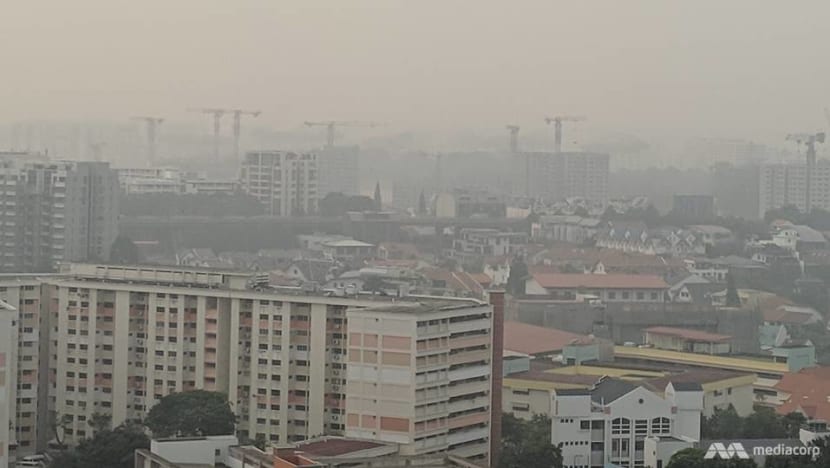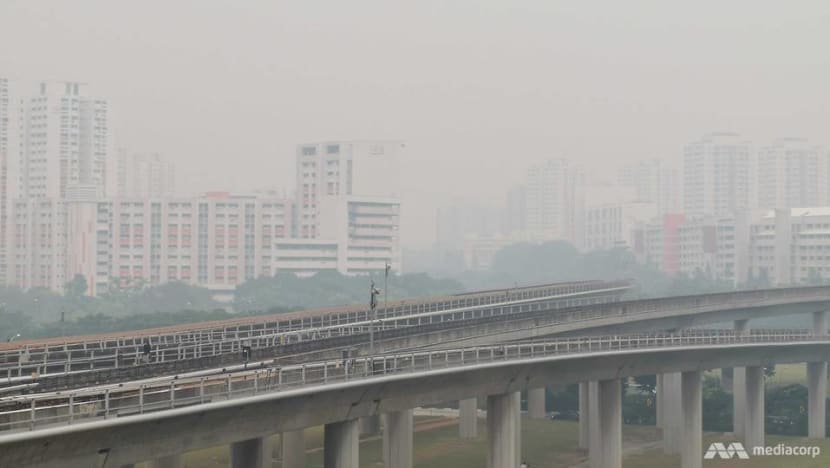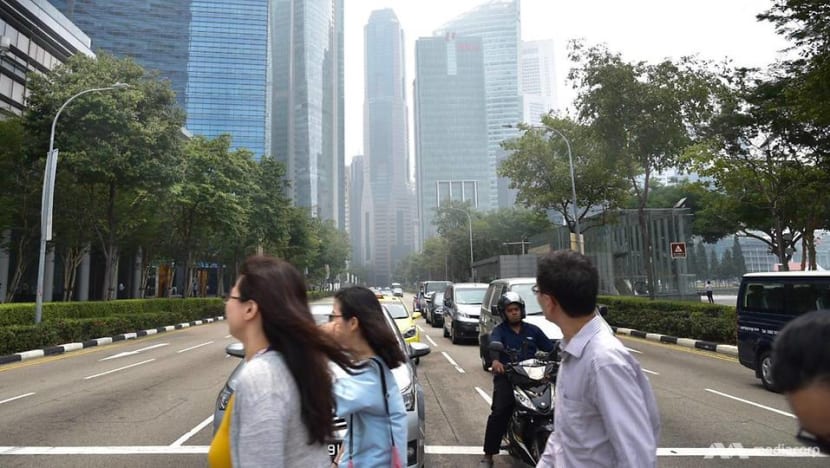Understand the haze: What do Singapore's air quality readings mean and how do they differ from others?

Haze seen from the Serangoon area on Sep 18, 2019.
SINGAPORE: With the haze affecting many aspects of life in the region from tourism to work and school, CNA spoke to Dr Khairunnisa Yahya, a senior scientific officer at the National Environment Agency's (NEA) pollution control department, to find out how the haze is measured and what the various readings mean.
WHAT IS THE 24-HOUR PSI?
The 24-hour Pollutant Standards Index (PSI) is computed based on six air pollutants - PM2.5, PM10, ozone, sulphur dioxide, nitrogen dioxide and carbon monoxide.
It was developed as an indicator of Singapore's daily air quality and is the reading that NEA's daily health advisories are based on.
PSI readings can fall within each of five ranges - Good (0 to 50), Moderate (51 to 100), Unhealthy (101 to 200), Very Unhealthy (201 to 300) and Hazardous (Above 300).
WHAT IS THE ONE-HOUR PM2.5?
It is the hourly average of the PM2.5 pollutant levels.
PM2.5 is fine particulate matter with a diameter of 2.5 micrometres or shorter.
It is the dominant pollutant during haze and can be harmful to health.
While the 24-hour PSI is an average of the past 24 hours, the one-hour PM2.5 reading offers the option of looking at air quality at a single point in time.
The one-hour PM2.5 readings may fall within one of these bands - I (Normal), II (Elevated), III (High) and IV (Very High).
READ: "Robust action plans" in place to mitigate haze impact - NEA
READ: Cutting through the haze - When do you need an N95 mask?
READ: 16 million N95 masks available in national stockpile as haze covers Singapore
WHICH READING SHOULD YOU FOCUS ON?
Health advice issued by NEA is based on the 24-hour PSI forecast so that members of the public can plan ahead.
For example, if you have an outdoor sports tournament planned for Saturday, you can look at the 24-hour PSI forecast for Saturday. If the figure is in the unhealthy range, it may be a good idea to think of protective measures.

The one-hour PM2.5 readings are best used as a guide to adjust immediate activities.
Thinking of going for a dip at the nearby swimming complex? If the PM2.5 figure is in the elevated band, you may want to postpone that swim to a later time.

Dr Khairunnisa sums it up: "For the 24-hour PSI, we give out a forecast so the public can plan their activities for the day. But for the immediate activity that you are doing for the next hour or so, you should be looking at the one-hour PM2.5."
IS THE "WINDOW TEST" A GOOD INDICATOR?
Looking out your window is not a good indicator because poor visibility is not always caused by air pollutants. It is, in fact, water that can cause visibility to worsen.
Water droplets scatter light. Water can also bind to particles of certain air pollutants, making them swell to a size that makes them scatter even more light. In this way, the haze can appear enhanced.

The effect is even greater when there is high humidity or rain.
This means that on days where there is not just haze but also high humidity, visibility can appear worse than indicated by the air quality readings.
IF THE ONE-HOUR PM2.5 READS AS NORMAL FOR AN EXTENDED PERIOD OF TIME BUT THE 24-HOUR PSI REGISTERS AS UNHEALTHY, DOES THIS MEAN OTHER POLLUTANTS ARE AT PLAY?
It is highly unlikely that such a PSI reading is caused by pollutants other than the PM2.5 during periods of haze.
It could be down to the fact that there were increased concentrations of PM2.5 earlier in the day, which may be confirmed by looking at PM2.5 readings recorded in the morning.
The PSI calculates the air quality over 24 hours so it is possible the reading you are looking at still factors in some of PM2.5 levels from then.
READ: Malaysia, Indonesia shut thousands of schools over haze
READ: 549 passengers stranded at Ipoh airport after flights delayed due to haze
WHAT IS THE DIFFERENCE BETWEEN THE PSI AND AQI?
There are multiple air quality indices readily available to the public including the World Air Quality Index (AQI) from website aqicn.org, a non-profit organisation set up in 2007.
Neither the PSI nor the AQI is incorrect - each is just computed using a different air quality index. The AQI adopts the United States Environmental Protection Agency Air Quality Index reporting system.
It obtains PM2.5 data from various countries to compute the latest numbers.

WHY IS THE PSI THE BEST READING FOR SINGAPORE?
To calculate the PSI, the NEA uses data from a network of air-monitoring stations around Singapore.
Different countries look at different health findings and their local circumstances to come up with their own index system, said Dr Khairunnisa.
As such, it has control of the entire process, ensuring a more accurate reading of the local situation.














